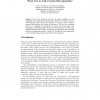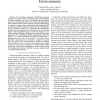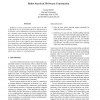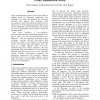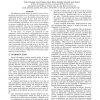107
click to vote
AUTONOMICS
2008
ACM
15 years 2 months ago
2008
ACM
A goal of computing and networking systems is to limit administrative requirements for users and operators. A technical systems should be able to configure itself as much as possi...
ECAL
2003
Springer
15 years 5 months ago
2003
Springer
Abstract. We do not attempt to provide yet another definition of selforganization, but explore the conditions under which we can model a system as self-organizing. These involve th...
116
Voted
SASO
2007
IEEE
15 years 6 months ago
2007
IEEE
— The increasing complexity of distributed enterprise systems has made the task of managing these systems difficult and time consuming. The only way to simplify the management p...
113
click to vote
SASO
2007
IEEE
15 years 6 months ago
2007
IEEE
Adaptive security is based on the observation that the security requirements of a system or service heavily depend on the environment in which they operate and should therefore be...
118
click to vote
SASO
2007
IEEE
15 years 6 months ago
2007
IEEE
Information systems form the backbones of the critical infrastructures of modern societies. Unfortunately, these systems are highly vulnerable to attacks that can result in enormo...
121
Voted
SASO
2007
IEEE
15 years 6 months ago
2007
IEEE
Robots in a swarm construction system need to be able to find their way to all potential places to add material to a structure. In two dimensions, a (trivial) procedure exists fo...
122
Voted
SASO
2007
IEEE
15 years 6 months ago
2007
IEEE
Grid and ubiquitous computing systems generally consist of a large number of networked nodes with applications implemented as distributed services or processes, respectively. A cr...
134
click to vote
SASO
2007
IEEE
15 years 6 months ago
2007
IEEE
Group communication primitives have broad utility as building blocks for distributed applications. The challenge is to create and maintain the distributed structures that support ...
126
click to vote
SASO
2007
IEEE
15 years 6 months ago
2007
IEEE
A fundamental problem that confronts decentralized reputation systems is the design of efficient, secure and incentive-compatible mechanisms to gather trust information despite m...
116
click to vote
SASO
2007
IEEE
15 years 6 months ago
2007
IEEE
Self-adapting systems based on multiple concurrent applications must decide how to allocate scarce resources to applications and how to set the quality parameters of each applicat...

